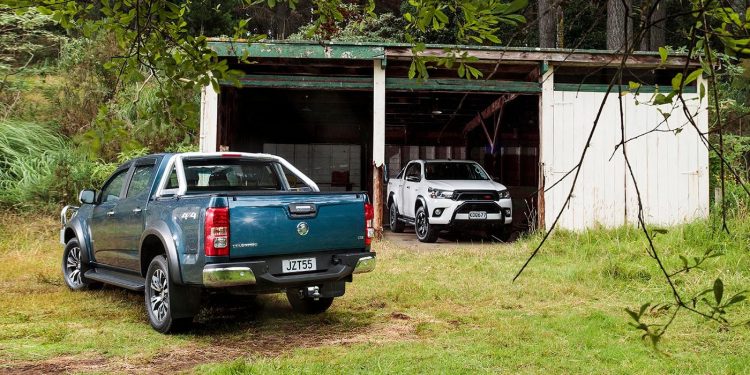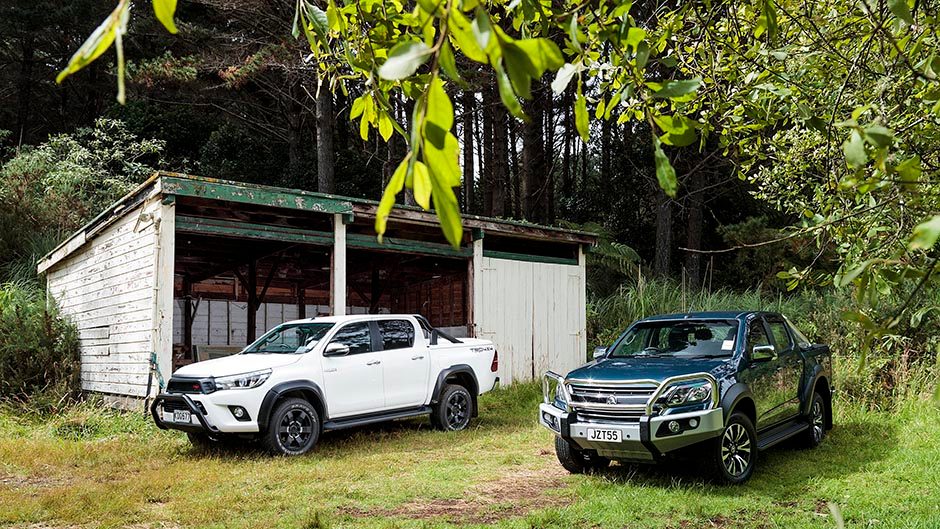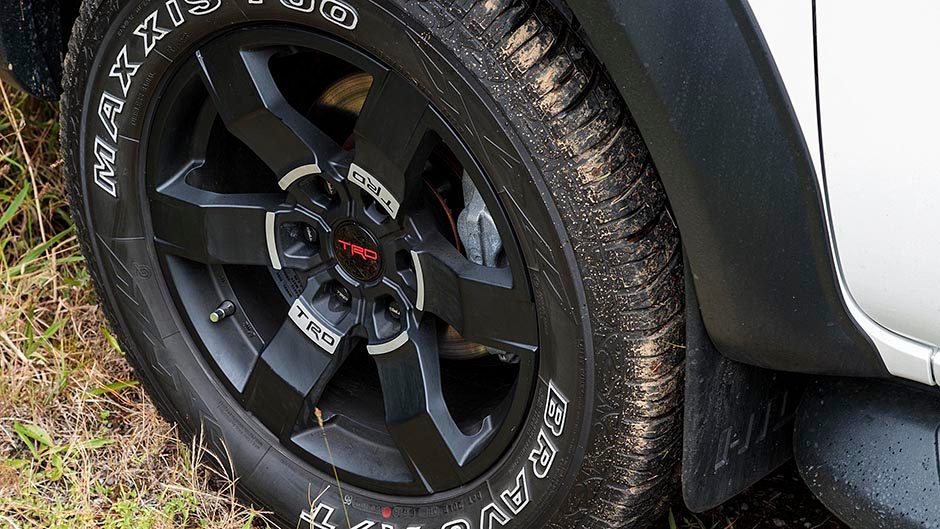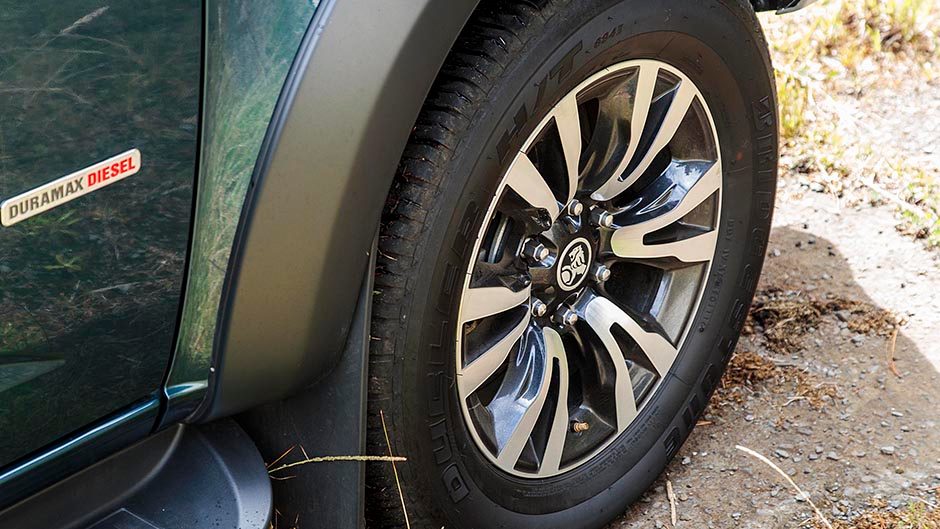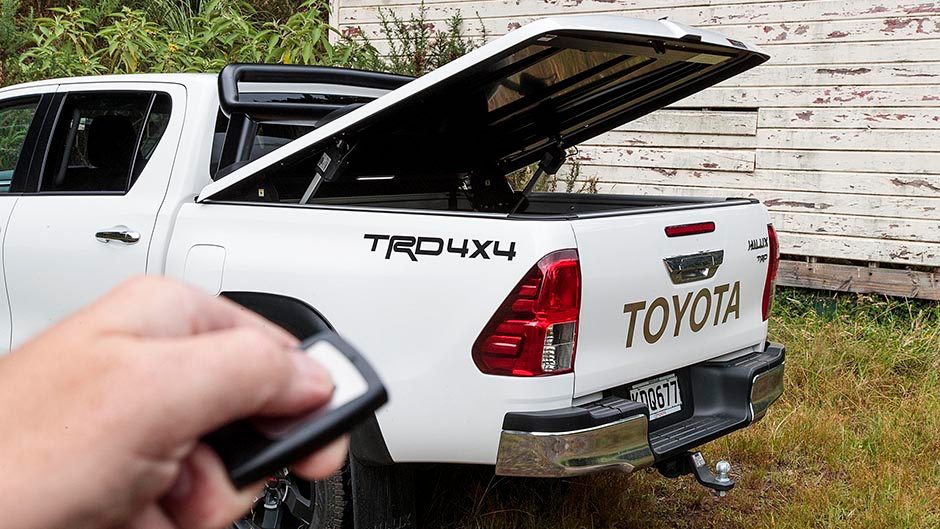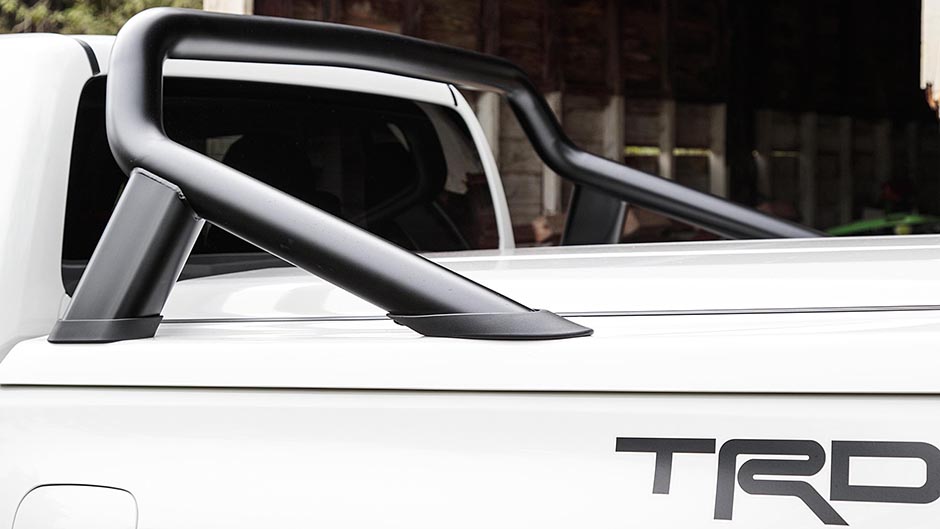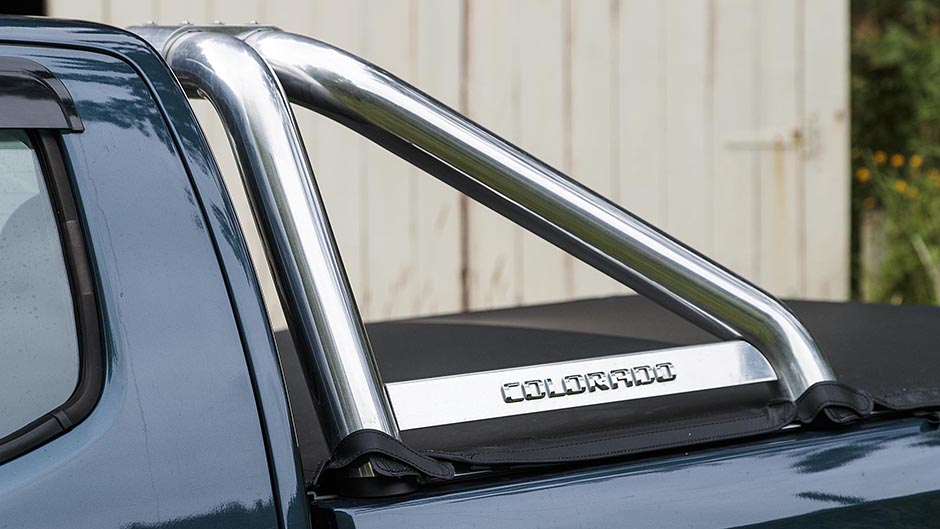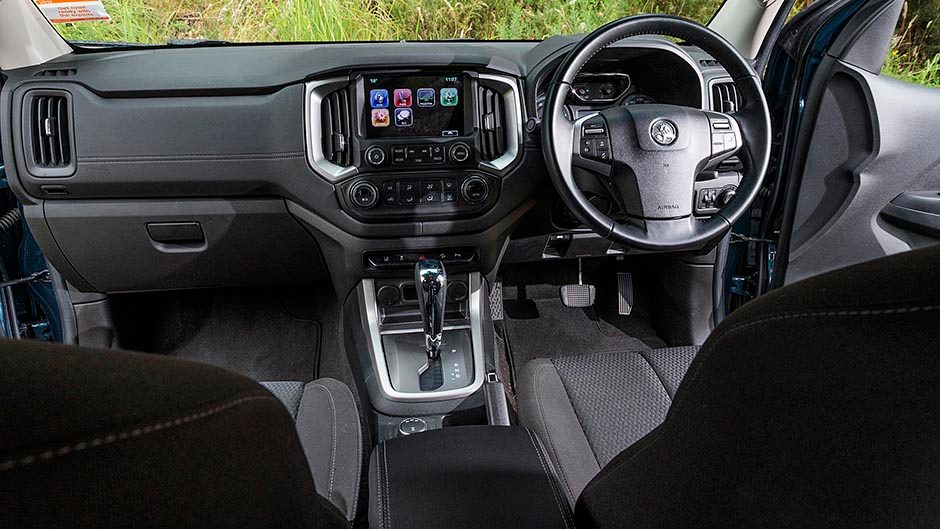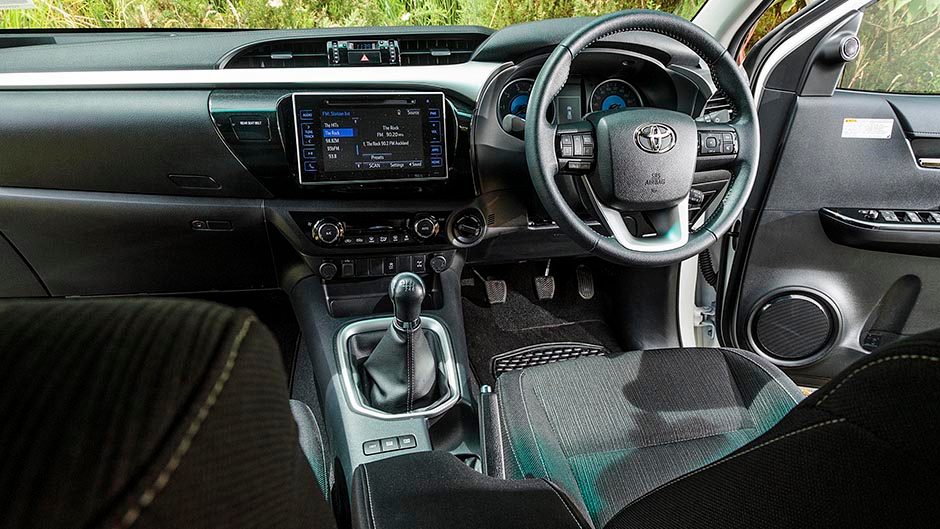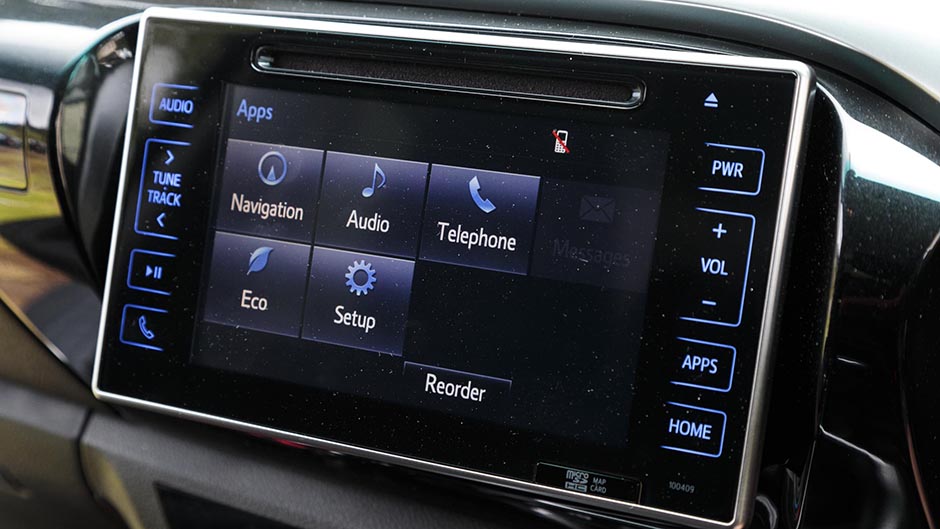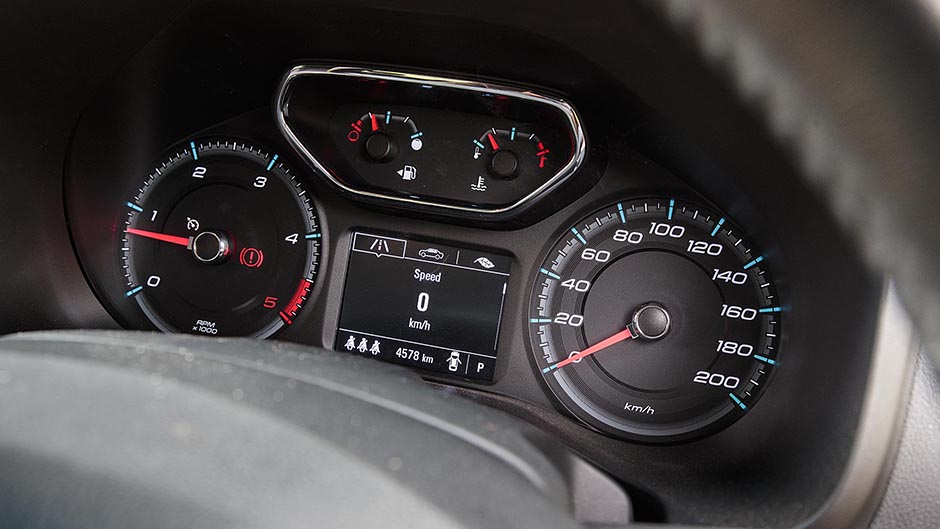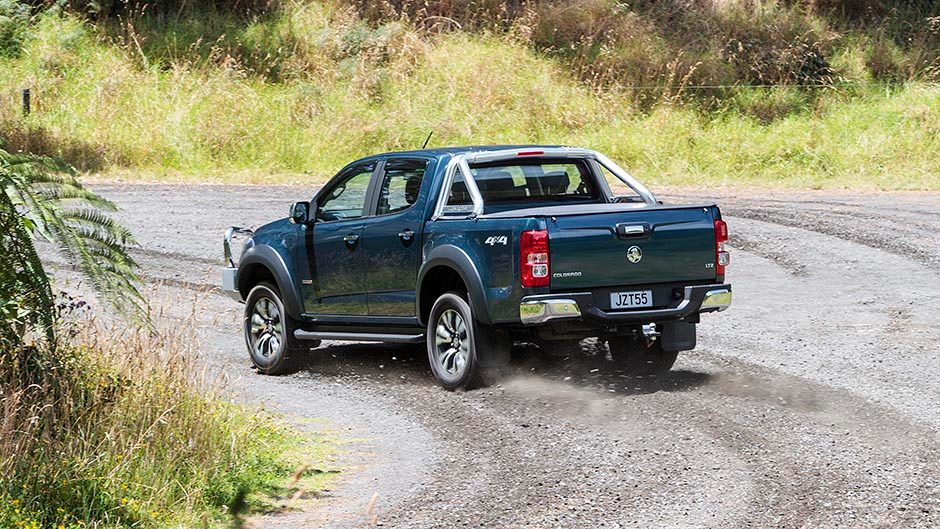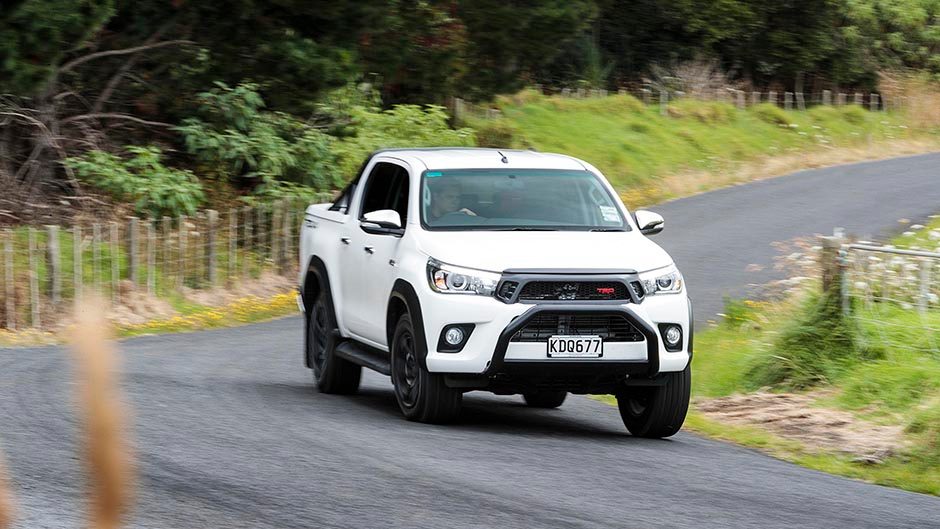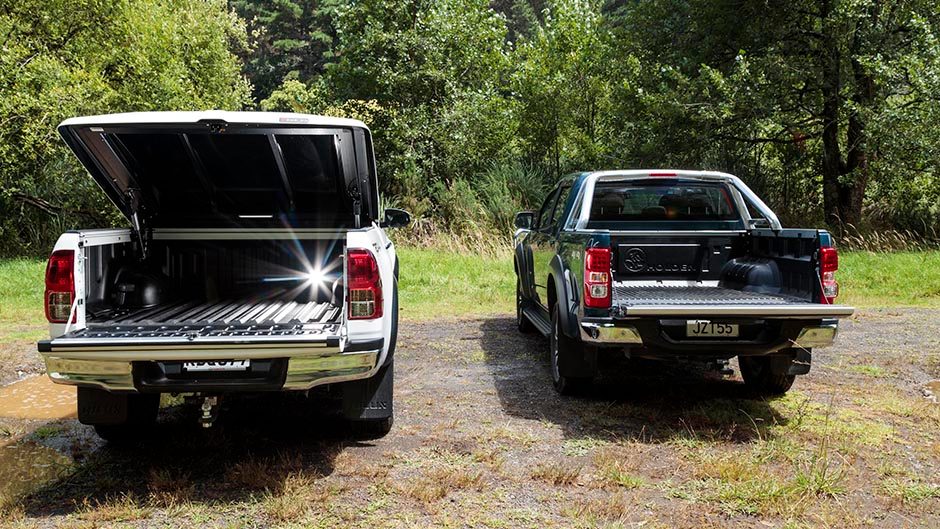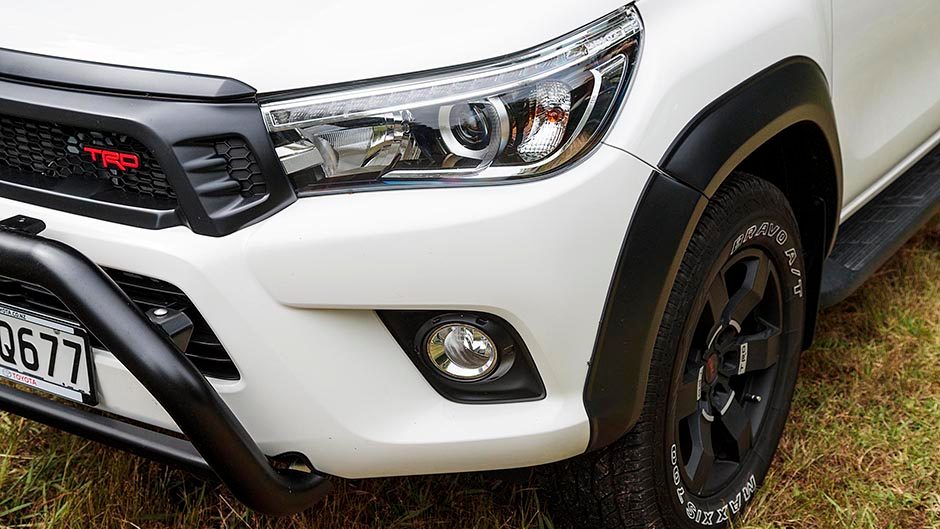2016 Holden Colorado LTZ 4×4 vs Toyota Hilux TRD 4×4 comparison
Words: Kyle Cassidy | Photos: Tom Gasnier
Another ute stoush, this time the Toyota Hilux, the third best selling vehicle in 2016, taking on the Holden Colorado, the fourth most popular nameplate last year. Does this sales order deserve to be reversed?
You may have noticed the increasing volumes of double cab utes roaming about the place. Combine the numbers of the 4×2 and 4×4 ute segments and they command 21 per cent of the new vehicle market. The majority of these purchases are of the high-riding double cab variety, two of which we have here. The Hilux has recently fallen from its number one truck status but has held firm as the second best seller. In 2016, it recorded 6187 sales, well behind Ranger’s 8478 haul, but ahead of the third placed Holden Colorado which managed 3739 retails. The race for second might be closer this year. In January, Ranger continued its romp at the top with 714 units sold. The Hilux was next best on 447, while Colorado managed 360. It would seem the gap is closing. When we reviewed the heavily revised Colorado last year we said we might well prefer it over Hilux, but a direct comparison is the only way to sort these things. As usual our review takes a look at these utes more from an ‘SUV with a tray’ perspective rather than how they fare as mud plugging, hard working tow machines.
Prices may vary
There is usually a variance in the RRP of a truck and the price paid, making it hard to pin down a ute’s true value. The Colorado in LTZ 4×4 auto specification, as tested here, lists at $60,990, plus the usual on-roads. Let’s call it the start point for negotiations shall we? The comparable Hilux is the SR5, which lists for $66,490 in 4×4 auto guise. Currently Toyota has a limited edition TRD model on offer, featured here. The TRD lifts the Hilux’s visual appeal with a selection of add ons. Based on the SR5 grade, it gets a nudge bar and grille up front to hide that strange looking nose while the wheel arch flares add some much needed visual muscle, as do the hard tonneau and sports bar and 18-inch alloys. There are 300 units on offer, this 4×4 manual is $63,990 (2WD models are $10k cheaper) which makes it good value given the regular SR5 also lists at $63,990. It suggests to us you’ll likely pay the full amount asked for the TRD (or nearer to), while the SR5 will still be open to the usual deal making.
The Colorado has electric seats with a reasonable range of adjustment though none in the lumbar area while the steering wheel moves only in the vertical plane. The plastics used in the cabin neither look nor feel special in any way. A large infotainment touchscreen features sat nav and both CarPlay and Android Auto while a few complementary hard buttons help make it easy to operate. In between the main dials is a simple looking but effective trip computer with the usual consumption info and a digital speedo, something lacking in the Hilux.
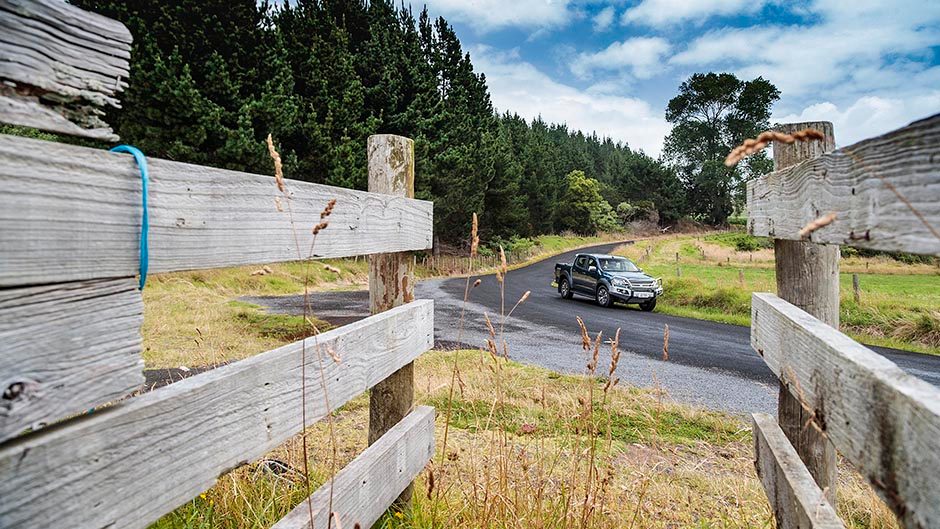
There’s a lane departure warning system for the Holden and a forward collision alert though it’s just an alarm; it won’t actually apply the brakes. Still, there’s descent control which from previous experience is handy to use, and also convenient is the LTZ’s fitment of parking sensors front and rear, though there’s no smart key, which the SR5 gets.
The Hilux has a better cabin design and though the plastics are hard they’re not as harsh as the Holden’s. While it’s manually adjusted, the Toyota seat is more supportive, and the steering moves in both the tilt and telescopic ranges. There’s sat nav as well in the Hilux, but no smart phone mirroring, and the tiny soft buttons of the touchscreen system make it hard to use. A power inverter in the Hilux is a handy feature, and while the resolution of the Toyota’s screen is better than that in the Holden, the reversing camera image is somewhat distorted, making it hard to judge just how close you are to objects. And the Hilux lacks parking sensors at either end. Each carries a five-star safety rating.
We’d prefer to ride in the back of the Colorado which offers an easier entry, its squab is comfier, there’s more of a recline to the seat back and, most importantly, more legroom. Your journey will also be more bearable in Colorado given its sweeter ride quality. Both have Isofix points for kiddy seats, and the seat bases flip up to store stuff more securely in the cabin.
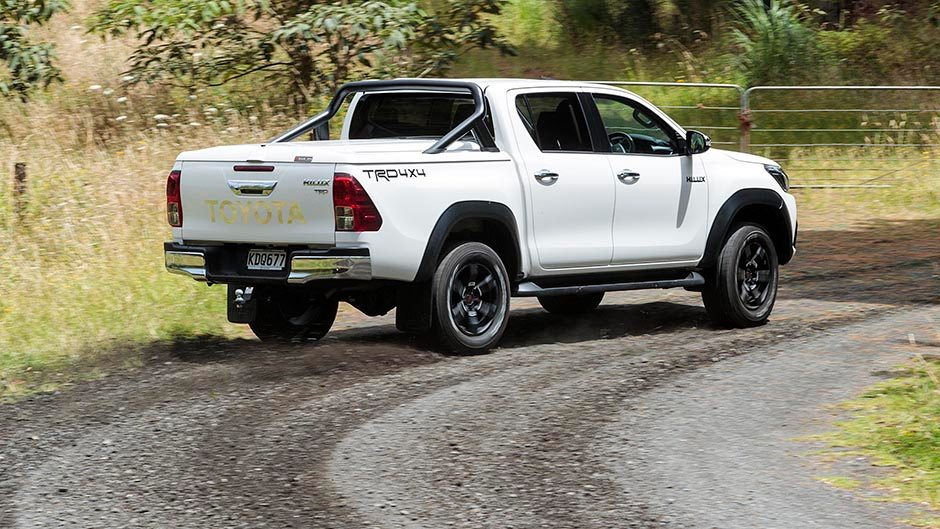
Additives, it’s a ute thing
As mentioned the TRD model is festooned with add ons, most of which you can retrofit to your Hilux. The test Colorado too had a couple of accessories, Holden launching a bigger range of bolt-ons for the new ute. The alloy bumper fitted here hides the ute’s new face with a Hannibal Lecter-like muzzle but will be popular with the off-road set as it improves the approach angle.
The Toyota’s new hard tonneau is a bit of a novelty with its powered, remote operation. It offers added security and convenience, in theory, though it’s painfully slow in action, taking almost 20 seconds to open. It also requires a separate remote fob to operate, so there’s something else dangling off the key ring, and we found this one a bit temperamental, sometimes requiring some pressure on the latch to release. Sure it looks good, but it severely limits the practicality of this ute and we wouldn’t recommend it.
The Hilux’s tray liner uses an anti-slip finish on the deck, and is fitted better than the flimsy, slippery liner in the Colorado. The Holden also has a cosmetic roll bar and while its standard fit tonneau solution is an old fashioned take, it’s much more practical. It offers no security for things stowed underneath however, and the refitting operation can be fiddly.
The load height of the trays is similar, and the width between the tailgate opening is all but identical. Hilux is a little longer and slightly wider overall and between the arches, but the extras are negligible. The tow rating for Hilux varies between models, the 4×4 diesel manual the best of them at 3500kg, whereas the two-wheel drive model is rated at 2800kg. All Colorados are rated to haul up to 3500kg.
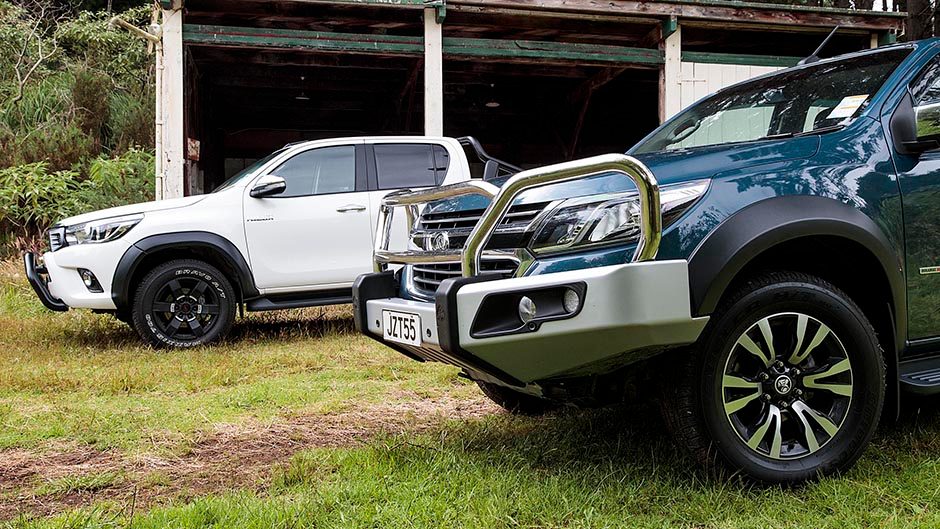
Power wars
In manual guise, the Hilux gets a few buttons on the centre console that are worth prodding. The first is the iMT switch, a throttle blipping setting to help smooth downshifts. This should really be the default setting, with a button to switch it off if you think you can do a better job, but odds are you won’t as the system nails smooth downshifts every time. The Eco mode button is best avoided, while the Power switch adds a detectable uptick in enthusiasm from the engine; it’s almost too much of a good thing in city running as it makes smooth progress through the gears more difficult and gives the traction control a hard time if it’s wet under tread. It also highlights the fact that Hilux is not particularly happy at 50km/h in fourth gear where it’s labouring slightly.
The power setting is favourable in the boonies, giving the ute a bit more gusto. It doesn’t actually boost power, just responses but the Hilux needs all the help it can muster if it’s to keep up with the runaway ’Rado. While both big oilers illicit the usual diesel rattle, the Colorado conveys a few more vibrations and is noisier when working hard, but we can grant it a pardon given how strong the Holden’s performance is. It’s comfortably quicker than the Hilux, both revving more freely and possessing more potent midrange urge.
This thing pulls like a mule but is also a race horse in the ute world; only the new (and very expensive) Amarok V6 will trouble the Colorado in a straight line. With its six-speed auto, the Colorado pulls better in-gear, and responds quickly when kicked down. You have to work the Hilux’s manual transmission over to emulate the same pace as Colorado, and it’s hard yakka. The Holden’s six-speed trans is far from perfect but it illustrates to us how well a turbodiesel and an auto work in a ute. Any city dweller would be mad to go for the manual, particularly when most autos now have effective torque convertor lock-up and little in the way of flare. Perhaps the only reason to go manual is for the improved fuel efficiency. These two however were about the same in our hands, registering in the 11s for diesel use, albeit low 11s for the Toyota (11.2L/100km) and 11.8 for the Colorado.
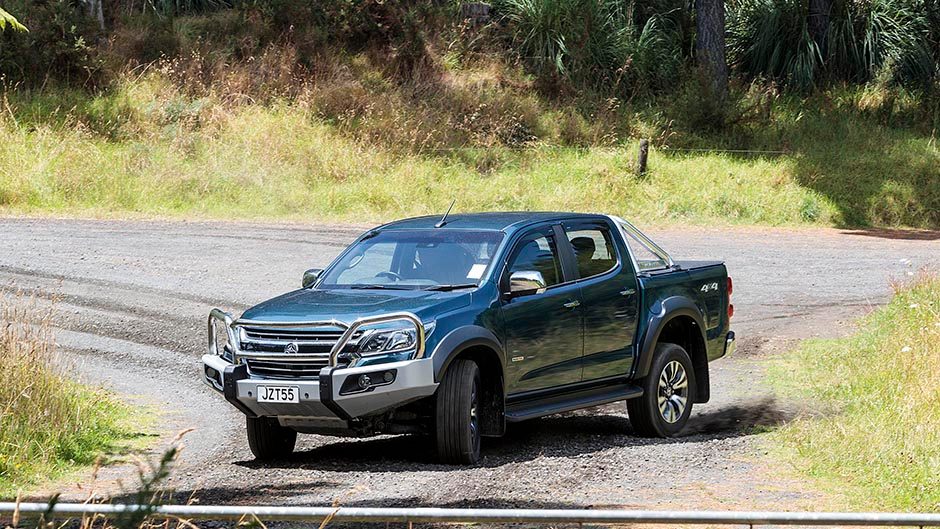
Hilux a better handler?
Generally, handling is influenced by suspension tune and the Hilux has a stiffer set-up which makes it a sportier type of drive but it also translates to an irritatingly bumpy ride. It never really settles, at least without a load on the tray, and the bumpy progress is the Hilux’s least redeeming feature.
The Colorado is much more agreeable in the ride stakes but it is still a leaf-sprung, full chassis ute so there’s always some degree of jiggle along the way. The Hilux’s steering is heavier in weight but is more direct and with an ounce more feedback too. The Colorado gets more of a lean on in bends and its ESP is a little too eager to calm things, while the Hilux’s system is a mite more relaxed in this regard. The Toyota is sportier at the wheel but only when you’re right up it. With its standard fit, helical-type LSD, the Colorado has superior traction, which is particularly evident from a standing start and on loose surfaces.
So which one?
We’re more likely to be swayed by the better looking Holden with its superior cabin space. It’s general ride quality is more preferable while its remarkable engine performance really seals its win here. But then it can all come down to the amount you actually pay and the price of aftersales servicing, which currently is gratis with the Hilux for three years/45,000km. The Colorado is the superior truck, but whether Holden can match Toyota’s overall deal is another thing.
| Model | Holden Colorado LTZ 4×4 | Price | $60,990 |
| Engine | 2776cc, IL4, TDI, 147kW/500Nm | Drivetrain | 6-speed auto, switchable 4×4 |
| Fuel Use | 8.7L/100km | C02 Output | 230g/km |
| 0-100km/h | 9.98sec | Weight | 2217kg |
| Model | Toyota Hilux TRD 4×4 | Price | $63,490 |
| Engine | 2755cc, IL4, TDI, 130kW/420Nm | Drivetrain | 6-speed manual, switchable 4×4 |
| Fuel Use | 7.6L/100km | C02 Output | 201g/km |
| 0-100km/h | 10.89sec | Weight | 2183kg |


